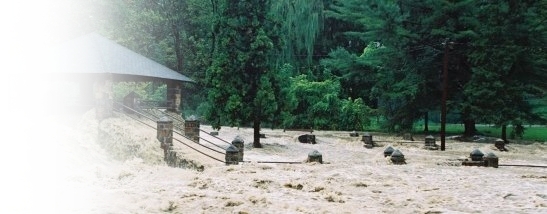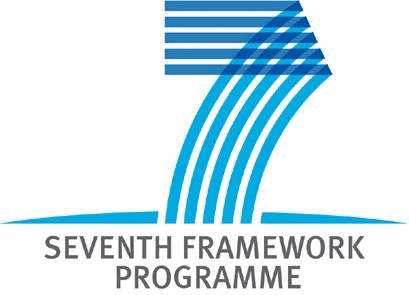SubProject #5
FF & DF risk management and mitigation in changing environments
SP Leader: CETaqua
Partners involved: CETaqua, WU, JRC, UPC-CRAHI, SMC, UPC-GITS, CUGRI, WSL, SCHAPI, ACA, AdBDxSele, EGMASA, GLARUS
Objective: Identify and review current practices to incorporate FF & DF past experiences into risk management strategies and policies, and propose a methodology to assess the impact of plausible future changes (climate, land use, socio-economic and other hazards, such as forest fires) that can occur in the test-bed areas and may affect their hydrological response, in particular with respect to FF & DF generating events. The main aim will be to provide guidelines
useful for practitioners to design mitigation and adaptation measures for FF & DF risk reduction and management taking into account both, past experiences and scenarios describing potential future changes.
Task 5.1: Compilation of FF & DF follow-up studies on damages and social impacts that have been carried out in the past in the selected test-bed areas. Special attention will be paid to the cases having lead to improvements of the local risk management plans or policies. These studies will be complemented by specific surveys to collect information about the effectivity of the implemented emergency plans and management procedures, as well as by the collection of
significant studies coming from other areas. The comparative analysis of the different practices as well as of the lessons learned from past events will be the base to propose a general reflection seeking suggestions for future strategies. The results from this task will be the base for the discussions on the 4 regional workshops to be organized in Task 9.3 of SP9 and for the guidelines and best practice recommendations to be elaborated in Task 5.6 [CETaqua, WU, JRC, SMC, WSL, UPC-GITS, SCHAPI, ACA, GLARUS EMERGENCY, AdBDxS, EGMASA].
Task 5.2: Identification of the main potential future changes (covering climate, land use and socio-economic evolution, and other hazards, such as forest fires) that are likely to occur in the test-bed areas and may affect their hydrological response during FF & DF events. An inventory of future plausible changes on the characterizing triggering factors will be compiled for each test-bed area. Sources providing data will be identified and data available will be systematised [CETaqua, WU, JRC, SMC].
Task 5.3: The main future change scenarios compiled in Task 5.2 will be translated into changes in the variable inputs of the triggering factors in the rule-based system developed in SP4. This system will be used to analyze the changes in the impacts relative to the current status of the test-beds. For each test-bed, sets of values of the governing parameters will be determined in order to capture realistic current and future situations as defined in previous task. In the case of land- use scenarios, it will be necessary for specific areas in the test-bed catchments, particularly those suffering large anthropogenic effects, to be forced by future simulation situations through the use of models (e.g. MOLAND; PELCOM, Mücher et al., 2001; EURURALIS, Verburg et al., 2006; ATEAM, Rounsevell et al., 2001). [CETaqua, WU, JRC, SMC, UPC-CRAHI, UPC-GITS].
Task 5.4: Analysis of the impact of the expected changes and identification of the zones of high potential risk/vulnerability in the test-bed catchments, using the methodology developed in SP2 will be made. New zones of high potential risk could appear/disappear depending on the future change scenarios [CETaqua, WU, JRC, UPC-CRAHI, SMC, CUGRI].
Task 5.5: Analysis of the impact of the expected tendency of FF & DF occurrences and their consequences will be made via the rule-based probabilistic forecasting system developed in SP4. This information will be used to assess the risk of a given combination of triggering factors in future situations, and compare it to the present situation in probabilistic terms, using the sets of values determined in Task 5.3 for the governing parameters. The impact of change, depending on the effects of future plausible changes and identification of new situations of risk, which in turn are outcomes of the analyses of future scenarios, will be evaluated [CETaqua ,WU, UPC-GITS].
Task 5.6: Provide guidelines for (i) mitigation of risk and (ii) adaptative management for the reduction of the risk damages and vulnerability associated with the expected changes, as well as recommendations for the implementation of the Flood Risk Management Directive. These guidelines will be based on the results of previous tasks and will be tested in the test-bed areas through the use of the rule-based probabilistic forecasting system developed in SP4 in order to test their effectiveness [CETaqua, WU, JRC, SMC, SCHAPI, ACA, GLARUS EMERGENCY, AdBDxS, EGMASA].




